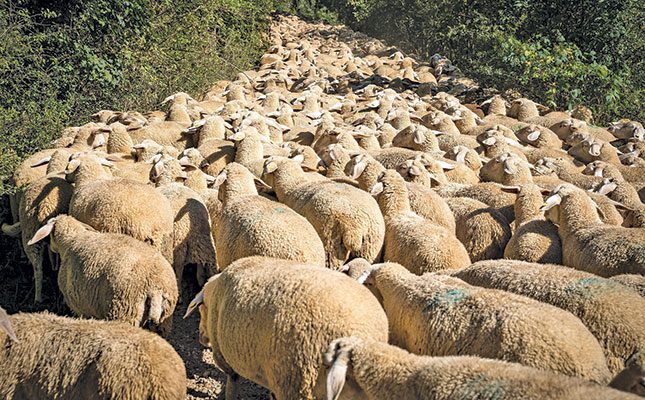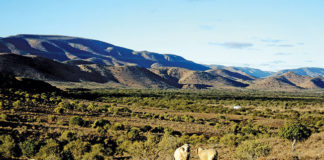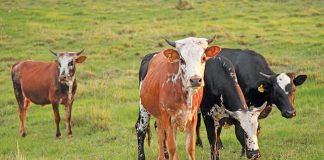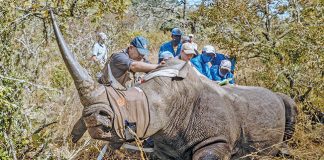
Photo: Pixabay
Without innovation and the creation or discovery of new solutions, many of the risks faced by the current generation of farmers will remain unmitigated, with the real possibility of these devolving into permanent, negative features of South Africa’s farming landscape.
One such risk is predation by jackal and rooikat (caracal/lynx), which continues to result in huge losses for sheep farmers. The farming community in general, and sheep farmers in particular, have over the years gone to great lengths and spent countless hours and millions of rands in research, experiments and the application of mitigation strategies to deal with this issue.
READ Have you considered these farming risks?
For example, a decade ago, between September 2012 and mid-January 2013, a total of 180 camera stations were set up on approximately 80 000ha, covering 17 sheep farms in the Laingsburg and Beaufort West districts of the Karoo. Thousands of kilometres of mostly gravel farm roads were travelled by the research team from the Centre for Social Science Research at the University of Cape Town.
To set the scene for a discussion about the problems and costs confronting sheep farmers when faced with ‘the jackal and rooikat problem’, it is important to consider what is entailed in the loss of a sheep through predation.
Importantly, calculating the total value must include costs such as the originating breeding or insemination costs, supplemental feeding of the pregnant ewe, animal health-care costs, lambing and rearing costs of the predated animal, grazing and water costs, all associated labour and energy costs related to the predated sheep, the future value of the mutton or wool of the now-predated sheep, other lost opportunity costs, loss of cash flow, and the time of the farmer or manager.
It is clear that considerable costs are involved in the loss of just a single sheep.
Extreme measures
The ‘black-backed jackal problem’ in the Rosmead-Schoombee area in the Eastern Cape is now so serious that the local farmers have taken to the skies and are hiring helicopters and professional hunters to fly through the area hunting jackal.
Yet, despite the introduction of this extremely expensive mitigation measure, together with regular hunts by day and night with night-sights and dogs, trapping, and the setting out of poisoned bait, predation by jackal and caracal continues to grow here at an alarming rate. Many farmers in the district seem ready to accept as a fait accompli that no solution for the ‘jackal problem’ exists, and that all possible solutions and interventions have been exhausted.
It is worth remembering that, when it comes to risk mitigation in farming, there is no single silver bullet; there exists no one solution to address all the aspects associated with even just one risk such as predation by jackal and caracal.
READ Insurance not covering all your risks? Here’s a solution
Sustainable risk mitigation in sheep farming should be an ongoing focus of attention, where new ideas are continually added to the menu, then implemented and tested for the desired results.
As previously noted, the mitigation of risk, underpinned by a strong focus on innovative solutions, is the core theme of this series of articles. Allow me to throw my hat into the ring on the issue of the predation problem by presenting what is an extreme idea – leopards!
With regard to the risk presented by jackal and rooikat on and around sheep farms, the fact that the leopard has almost been removed from the Karoo ecosystem as the top predator lies at the heart of the problem. Mother Nature has filled the gap left by the leopard, replacing the spotted cat with jackal and rooikat.
Moreover, many decades of hunting and trapping have removed the genetics of the less smart canines and felines, leaving only the most cunning still breeding. The smartest jackal and rooikat now find themselves atop the food pyramid of the veld in much of the Karoo.
Has any sheep-farming district in South Africa tested the impact of the reintroduction of leopards on the following?
- Jackal and rooikat numbers;
- Predation by jackal and rooikat on sheep with leopard present in the district; and
- Predation on sheep by leopard.
From the perspective of the risk mitigation of losses of livestock through predation by jackal, the arithmetic is firmly in favour of leopards. Jackal become sexually mature at 11 months, gestate for 60 days, and produce litters of up to nine pups.
The average mortality rate of jackal pups is a relatively low 40%, and those that survive into their second year can expect to have lifespans of between six and eight years. Leopards become sexually mature at 24 to 28 months but rarely mate before their third year, most often producing only one or two cubs.
The cub and juvenile mortality rate among leopards is high at 65%. In the wild, the lifespan of leopards is between 10 and 12 years. Hunting of leopards was only suspended in South Africa in 2016, and it remains listed as a threatened species.
It is better to have a single, territory-bound leopard on the property than possibly three or four breeding pairs of jackal, and any number of nomadic, sub-adults or single, non-breeding adults.
Restoring the balance
To my mind, the arithmetic around the choice of risk mitigation strategy is firmly behind the leopard, where its reintroduction into jackal- and rooikat-infested areas as top predator would see the numbers of the second-tier predators decline sharply, with the associated decrease in loss of sheep and other livestock due to predation.
Of course it would be imperative to ensure the overall health of the ecosystem, with sufficient numbers of primary, wild-prey species for leopard being available for the reintroduced top predator. Having regular patrols of fence-lines, grazing camps and lambing areas would also be vital. The reintroduction of leopards as a proposed mitigation measure requires much more serious research and testing by participating farmers, together with the rehabilitation of wild, unfarmed areas in farming districts.
Does the ‘out-of-control jackal problem’ warrant the further investigation of this seemingly drastic mitigation measure?
A number of farms in the Nieu-Bethesda area in the Karoo follow a different jackal control strategy that is part of a broader, holistic approach to farming based on the re-establishment of balance within the ecosystem.
There is at least anecdotal evidence to support the further investigation, research and documentation of the ‘no hunting, no shooting’ policy towards jackal and rooikat, as this approach is reported to have delivered dramatic reductions in predation on sheep and lambs by these two species.
Ensuring food sources
Another strategy that has reported success is prohibiting staff from hunting with dogs on farms. The thinking is that if the numbers and variety of the wild and preferred prey species of jackal and caracal, such as hares, ground squirrels, meerkat, rodents, reptiles, insects, birds, young antelope, and even certain fruit in the case of jackal, are left undisturbed, the predators will have no need to target domestic livestock, as their traditional food sources will be plentiful.
READ How insect predators can help you
The counter-argument is that predators will always select ‘easier’ prey, with energy conservation and lower risk of injury being the two key motivations: sheep are slower than spring hares and not armed with dangerous, piercing horns, as are most antelope species.
Supporting the approach of ‘less shooting, and more research’, in an interesting article titled ‘Superdogs’, the author Don Pinnock, after field-research and interviews with experts involved in ‘pest-control’ programmes, came to the following conclusion:
“We now have a sheep farmer’s worst nightmare – a predator which thrives on persecution. By fast-tracking natural selection, we’ve produced a superdog.” (Africa Wild Forum, 19 June 2021.)
Further investigation is warranted to follow up and document if and how these alternative risk mitigation strategies are working.
Hunting with dogs a big threat
Yet another scourge has emerged, which, if left unchallenged, has the potential to become an even greater problem than jackal and caracal predation: a cultural tradition among the Xhosa of hunting with dogs for both the pot and for sport.
There have been reports of hunters travelling from the Transkei to the Karoo with up to 40 hunting dogs and returning home with bakkie-loads of small game. Local Karoo communities reportedly place bets on the achievement of various hunting feats.
Greyhounds, whippets and other breeds of racing dogs are used, with springbok being a highly prized target species.
READ Guard dogs: which breed is best?
Since communal land in South Africa has long since been stripped of all game, it is only a matter of time before private landowners will come face-to-face with this new threat. How long will it be before sheep, lambs, goats and other livestock fall as casualties in what could become an unregulated craze among communities living as neighbours to our farming districts?
‘Management-by-walking-about’ was once a popular method of keeping one’s finger on the heartbeat of a business. Short of erecting 2,5m-high, solar- or generator-powered, double-reinforced electric fencing at the cost of a small farm, it appears that the only feasible mitigation strategy to combat predation, illegal hunting, poaching and other unwanted, uninvited visitors to the farm is twice-daily physical patrols of high-risk areas on horseback, carrying a licensed firearm, and accompanied by trained security dogs.
Email PJ Mommsen at [email protected]. Read the full Centre for Social Science Research report.










